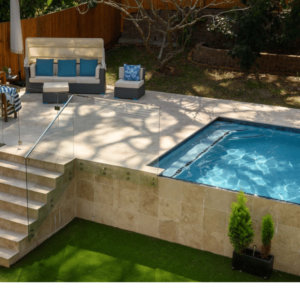Introduction: Thin brick veneer has become an increasingly popular choice for home and business owners looking to add character and charm to their buildings. But the key to a successful thin brick installation lies in the method used. In this guide, we’ll delve into the different approaches to thin brick installation, from mortar to mechanical fastening systems, and help you choose the best method for your project.
Understanding Thin Brick Installation
Thin brick, also known as brick veneer, is a layer of brick applied to the exterior or interior of a building to enhance its aesthetic appeal. Unlike traditional full-brick construction, thin brick is lighter, easier to install and cost-effective. However, proper installation is crucial to ensure a long-lasting and durable finish.
Types of Thin Brick Installation Methods
There are several thin brick installation methods available, each with its own advantages and disadvantages.
Mortar Method
The traditional and most commonly used method for installing thin brick is by using mortar. This involves applying a bed of mortar to the wall and then pressing the brick into place. The mortar is then smoothed and finished to create a seamless and professional look.
Pros:
- Gives a traditional, classic look
- Provides a strong bond between the brick and wall
- Can be used on a variety of surfaces, including concrete, masonry and drywall
Cons:
- Time-consuming and requires skilled labor
- Can be messy and difficult to clean up
- May crack over time, requiring costly repairs
Mechanical Fastening Systems
Another option for installing thin brick is using mechanical fastening systems, such as metal clips, anchors and ties. This method involves attaching the brick to the wall using these systems, eliminating the need for mortar.
Pros:
- Quicker and easier to install than the mortar method
- Requires less skilled labor
- Offers a clean and modern look
- Minimal visible fasteners for a more seamless appearance
Cons:
- Limited to certain surfaces, such as masonry or concrete
- May not provide as strong a bond as the mortar method
- Requires specialized equipment and supplies
Choosing the Right Thin Brick Installation Method
When selecting a thin brick installation method, consider the following factors:
- Surface: What type of surface are you installing the thin brick on? This will impact the type of installation method you can use.
- Aesthetics: What look are you going for? The traditional and classic look of mortar, or the modern and clean look of mechanical fastening systems?
- Cost: How much are you willing to spend on installation? The mortar method is often more expensive, while mechanical fastening systems can be more cost-effective.
- Time: How much time do you have for installation? The mortar method can take longer, while mechanical fastening systems are quicker.
- Skill Level: How skilled is the labor available for your project? Mortar installation requires more expertise, while mechanical fastening systems are easier to install.
Frequently Asked Questions
Q: What is thin brick veneer?
A: Thin brick veneer is a layer of brick applied to the exterior or interior of a building for aesthetic purposes. It is lighter and easier to install than traditional full-brick construction.
Q: What is the traditional method for installing thin brick?
A: The traditional method for installing thin brick is using mortar.
Q: What are the advantages of using mechanical fastening systems for thin brick installation?
A: The advantages of using mechanical fastening systems for thin brick installation include quicker and easier installation, less skilled labor required, a clean and modern look, and minimal visible fasteners.
Q: What should I consider when choosing a thin brick installation method?
A: When choosing a thin brick installation method, consider the surface you will be installing the brick on, the aesthetics you want to achieve, cost, time, and the skill level of the labor available for your project.
Q: Can thin brick be installed on drywall?
A: Yes, thin brick can be installed on drywall using the mortar method.
Q: Can the mortar method be used on any type of surface?
A: The mortar method can be used on a variety of surfaces, including concrete, masonry, and drywall.
Conclusion
Thin brick installation methods vary in their approach, advantages, and disadvantages. Whether you choose the traditional mortar method or the modern mechanical fastening systems, it’s important to consider the surface, aesthetics, cost, time, and skill level of the labor available for your project. With proper installation, thin brick veneer can add character and charm to any building for years to come.






